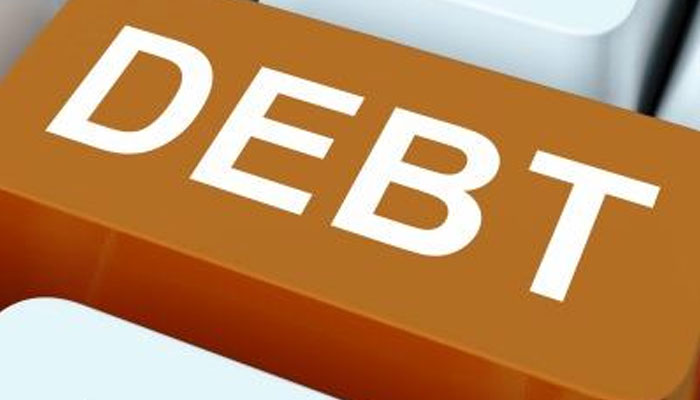Pakistan’s debt, liabilities stand at 106.8pc of GDP
ISLAMABAD: Pakistan’s economy has returned to the decade of 90s as the country’s total debt and liabilities in percentage of GDP ratio has crossed a psychological mark of 100 percent and now stood at 106.8 percent of GDP by end June 2020.
The total debt and liabilities in decade of 90s were close to 100 percent but now it had crossed this psychological mark and stood at 106.8 percent of GDP on June 30, 2020. The whole economic picture is quite similar to the situation that prevailed in decade of 90s.
It’s not only debt and liabilities witnessing skyrocketing trends, the country’s overall balance of payment position also worsened despite thumping over achieving current account surplus by Prime Minister Imran Khan.
However, renowned economist Dr Hafeez Pasha pointed out that the overall balance of payment that includes current account and financial account worsened by 60 percent in July 2020 compared to the same month of the last fiscal year.
Pakistan’s total debt and liabilities surged to Rs44.5 trillion, equivalent to 106.8 percent of GDP till end June, 2020. The PTI-led government increased total debt and liabilities to the tune of Rs14.7 trillion in last two years against PML-N increase in debt and liabilities to the tune of Rs15 trillion in last year’s tenure. So net increase in debt and liabilities were doubled under PTI-led regime in comparison with PML-N five-year rule.
With existing pace, there has been prediction that the total debt and liabilities might be doubled by 2023 after five-year tenure of PTI-led regime.
Dr Hafeez Pasha when contacted by this scribe, said that the total public debt and liabilities considered to be in safe zone when it stood in the range of 50 percent of GDP. However, Pakistan’s envisaged debt in percentage of GDP to the tune of 60 percent under Fiscal Responsibility and Debt Limitation Act, however, now it crossed 106 percent of GDP. He said that the devaluation and increased deficit resulted in hiking the public debt and liabilities.
He also mentioned that there was some kind of hackers attack on SBP’s website because it was showing data for different period so authorities concerned must look towards this issue. This scribe also contacted Dr Ashfaque Hassan Khan for seeking comments, he said that the IMF programme was designed in such a way that was bound to increase poverty, unemployment and surge in overall debt burden. He said that the public debt indicated net increase in debt so it was all the governments in the past since 1947 that were supposed to pay the principle and mark-up amount of obtained debt and liabilities burden. It was not new phenomena but the increase in pace of debt burden was unprecedented in last two years, he added.
The official data showed when the PTI came into power, Pakistan’s total debt and liabilities stood at Rs29.8 trillion on June 2018. This debt and liabilities burden went up to Rs40.2 trillion by end of June 2019 and now it escalated to Rs44.5 trillion.
The PML-N increased debt and liabilities from Rs14 trillion to Rs29 trillion in last five years from Rs2013 to 2018. Pakistan’s total debt and liabilities stood at Rs6 trillion in 2006-7 and under PPP rule it increased from Rs6 trillion to Rs14 trillion from 2007-8 to 2012-13.
Pakistan’s debt and liabilities have been increasing at supersonic speed and now it had entered a danger zone. The total debt and liabilities in percentage of GDP crossed 100 percent mark and now stood at 106.8 percent of GDP by end June 2020.
It is also a fact that the debt and liabilities increased by Rs11 trillion in first year rule of PTI in fiscal year 2019 but it went up from Rs40 trillion to Rs44.5 trillion so in second year the pace of debt increase restricted and it surged by Rs4 trillion only.
Pakistan’s total debt stood at Rs42.08 trillion by end of June 2020, equivalent to 100 percent of GDP. Total liabilities stood at Rs2.476 trillion till June 2020.
When contacted official spokesman for Finance Ministry for seeking his comments said that the total public debt and liabilities increases to 106 percent of GDP but if you look only total public debt it was hovering around 87 percent of GDP by end June 2020. He said that the pre-COVID-19 pandemic Pakistan fiscal balance was surplus and the tax revenues were increasing by over 17 percent till Feb 2020 compared to the same period of last fiscal year.
But the fiscal situation changed altogether where revenues were dropped and expenditure hiked so the budget deficit rose to over 8 percent of GDP. He said that for going forward the FBR would have to achieve its desired target of Rs4,963 billion and the expenditure would have to be curtailed.
He said the government did not slash down development expenditure but non-development expenditure were slashed down as despite political pressure the salaries and pensions were not raised. He said that the government would have to expand its GDP and taxes would have to be increased to avoid ballooning of public debt. He said that the government was implementing strategy to raise revenues and cut down expenditure to curtail debt burden over medium to long term basis.
-
 Duke's Peace Talks With King Charles, Prince William: 'Ball Is In Harry's Court'
Duke's Peace Talks With King Charles, Prince William: 'Ball Is In Harry's Court' -
 New Research Finds Back Pain May Disrupt Men’s Sleep Quality Later In Life
New Research Finds Back Pain May Disrupt Men’s Sleep Quality Later In Life -
 Jennifer Lopez Still 'very Close' With Ben Affleck's Children, Invites Them To Vegas
Jennifer Lopez Still 'very Close' With Ben Affleck's Children, Invites Them To Vegas -
 Matt Damon Gets Honest About Netflix's Way Of Storytelling
Matt Damon Gets Honest About Netflix's Way Of Storytelling -
 Prince William, Harry Rift Still 'simmering Away'
Prince William, Harry Rift Still 'simmering Away' -
 What's Buzzing Around TikTok's 'PineDrama' App: Everything You Need To Know
What's Buzzing Around TikTok's 'PineDrama' App: Everything You Need To Know -
 Who’s Next After Australia’s Under-16s Social Media Ban?
Who’s Next After Australia’s Under-16s Social Media Ban? -
 Do You Have Depression Or Is It Just Monday Blues? Find Out Where Science Stands
Do You Have Depression Or Is It Just Monday Blues? Find Out Where Science Stands -
 Why Claude Is Gaining Momentum In Revolutionizing The AI Landscape
Why Claude Is Gaining Momentum In Revolutionizing The AI Landscape -
 Elon Musk Unveils Plans To Take Humanity To The Moon And Mars
Elon Musk Unveils Plans To Take Humanity To The Moon And Mars -
 Air Pollution May Play A Role In Prostate Cancer Risk, Experts Warn
Air Pollution May Play A Role In Prostate Cancer Risk, Experts Warn -
 Royal Expert Reveals Real Reason King Charles Won't Meet Prince Harry Next Week
Royal Expert Reveals Real Reason King Charles Won't Meet Prince Harry Next Week -
 Ansel Elgort Welcomes His First Baby In Secret
Ansel Elgort Welcomes His First Baby In Secret -
 Startup Aims To Brighten Night Skies With Space Mirrors
Startup Aims To Brighten Night Skies With Space Mirrors -
 Cheaper Cars, Fewer EVs: Trump Administration Shifts ‘auto Policy’ Focus
Cheaper Cars, Fewer EVs: Trump Administration Shifts ‘auto Policy’ Focus -
 Meghan Markle Takes 'breadwinner' Role In Prince Harry's California Life
Meghan Markle Takes 'breadwinner' Role In Prince Harry's California Life




